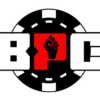In the previous lesson, I stressed the importance of playing tight-aggressive but conservative poker during the early stages of an MTT. Once you get past this stage, typically when the antes start, you will need to open up your game a bit more and play some poker. The middle stages of an MTT is when you want to start building a big chip stack quickly, so a more loose-aggressive style is essential. This means stealing blinds, re-stealing, continuation betting, value shoving and more. The middle stages can be difficult to adjust to for tight and/or inexperienced players, so look to take advantage of them by getting aggressive when you sense weakness.
BLIND STEALING & DEFENDING ARE ESSENTIAL
In the middle stage of MTTs, you should look for opportunities to steal and re-steal as much as possible. This is because the blinds and antes become to eat into our chip stack at a much higher rate, which is why it’s essential to increase your aggression. Sometimes you can steal the blinds on the button with any two cards. Other situations require a much tighter range. Find out who you’re up against and adjust accordingly because acquiring chips at this stage is an absolute necessity if you want to make a run for the money.
You will also need to defend your blinds more liberally against aggressive players. This doesn’t mean calling too often with junk hands, although sometimes you will get the correct pot odds to do so. Just remember that you’ll be out of position for the entire hand and of course make sure to have great implied odds before making the call preflop. But as I’ve said in previous lessonsm, the most effective way to defend your blinds is by re-raising.
GETTING AGGRESSIVE ON THE FLOP
When you’ve raised preflop, remember this – your opponent(s) only need to fold a combined 33% of the time when continutation betting 50% of the pot. Keep this in mind when c-betting for both value and as a bluff/semi-bluff. It’s hard to make hands in Hold’em and a lot times you and your opponent will flop nothing but air or a backdoor draw. Keep the pressure on, especially in heads-up pots, and build your chip stack.
If someone shows weakness postflop, think about raising any drawing hand with potentialUnlike early MTT strategy, you’ll need to force yourself to take bigger (calculated) risks and look for spots to steal. I can’t stress this enough. You’ve probably heard this before, but the most important thing when bluffing in a tournament (and cash games as well) is to make sure you still have outs when called. So, be aggressive, but don’t spew with “zero equity bluffs”, because if called, you’ll have minimal to no chance of winning the hand.
Finally, if you have the best hand on the flop, it’s never a bad play to go all-in with more than two opponents in the pot. It makes your hand look weak, meaning you’ll get better value from looser calls, but also denies proper odds for drawing hands.
YOUR IMAGE & TABLE DYNAMICS
It’s important to maintain a loose-aggressive image during the middle stages of MTTs to prevent more aggressive players from bullying you. However, you shouldn’t feel obligated to call players only to “look them up” or “keep them honest” because chips in a tournament become so valuable that you’ll just be throwing money down the toilet. I also don’t feel you need to be the table captain either. You just want to have enough respect to give you fold equity for your steals, yet a loose enough image to get value for your overbets and shoves. Overall, it’s important to mix up your game, find a little balance, and not become too predictable.
Reraising against weak opponents from early position is a good example of mixing it up. Look to take advantage of weaker players and make sure you’re the bully. It only takes a few of hands of aggressive action to prove you won’t be pushed around. If other players notice that you’re folding too much to steals, 3bets, etc., everyone at the table will take advantage of this. Having some respect at the table will win more pots and players will think twice before making a move on you. Just be careful not to get trapped 😉
BEYOND THE BASICS: INTRODUCTION TO ICM
As we build our stack throughout the middle stage of the tournament, the bubble draws closer with each blind level. This is when ICM (Independent Chip Model) becomes super important for determining the most profitable play. ICM is a calculation that bases tournament decisions (shoving, calling or folding) based on your “tournament equity”. Your equity is calculated based on your chip stack, the chip stack of your opponents and the tournament payoff structure.
In a nutshell, ICM produces more profitable decisions when taken into account. For example, when you’re approaching the bubble, there will usually be greater tournament equity folding to a player who has you stacked and moves all-in, rather then calling – even if you think you have him beat. Use programs such as SNG Wizard or ICMIZER to help you make these decisions. As a general rule, you should be playing much tighter than you normally would, and be very skeptical about calling a medium stack player’s all-in.
You will learn more about ICM and how to play the bubble in the lessons that follow.



